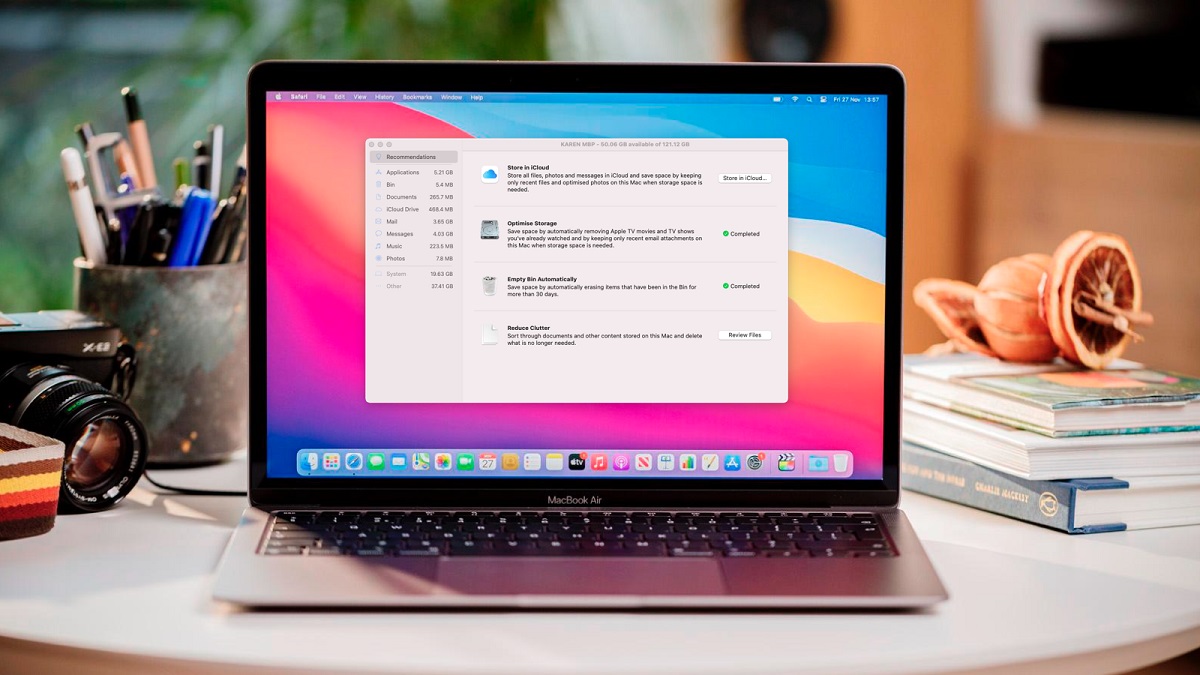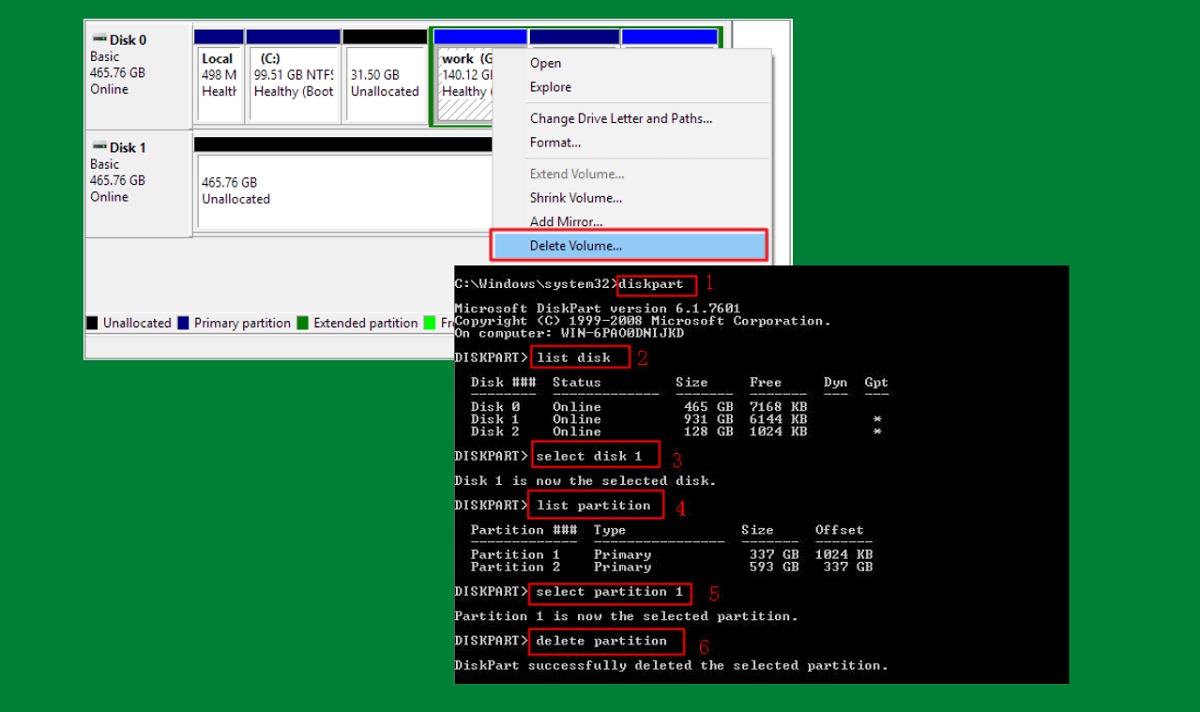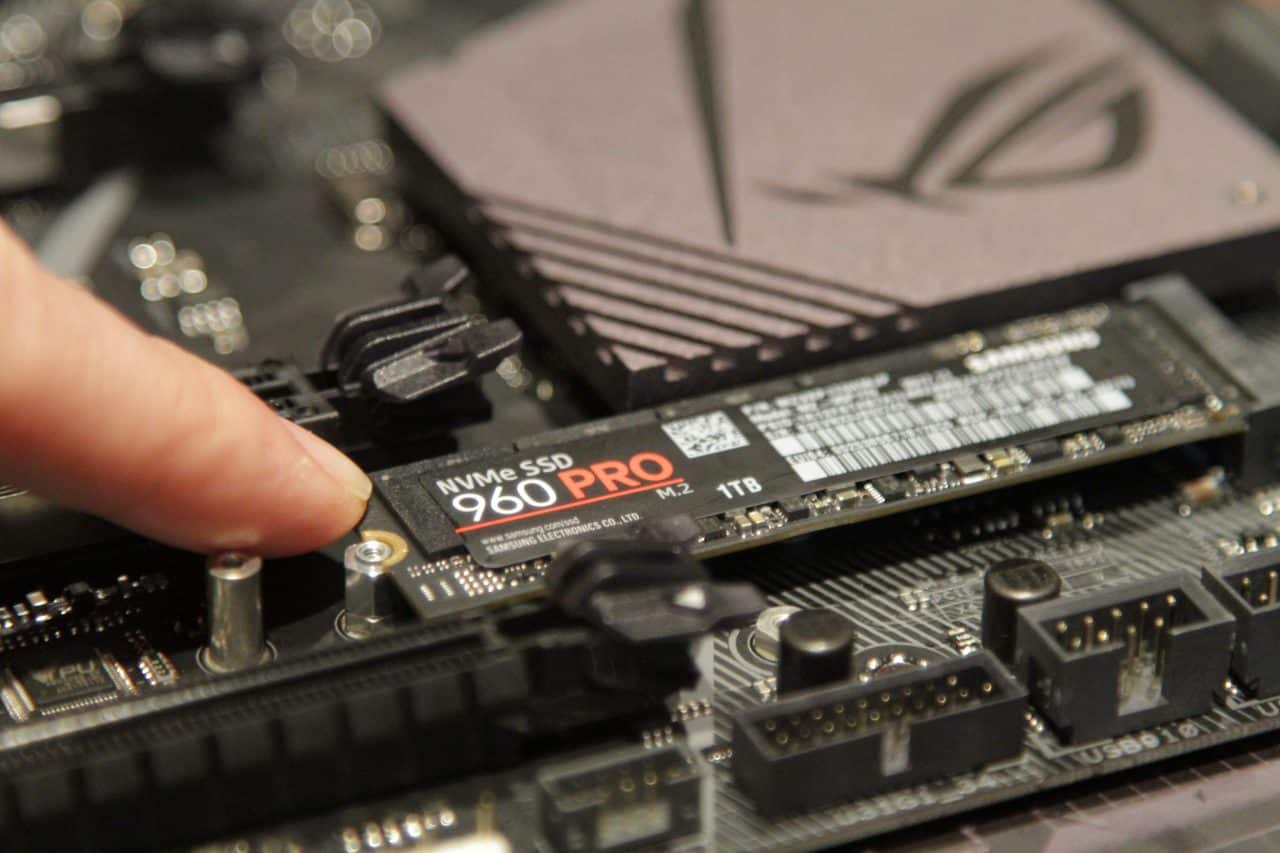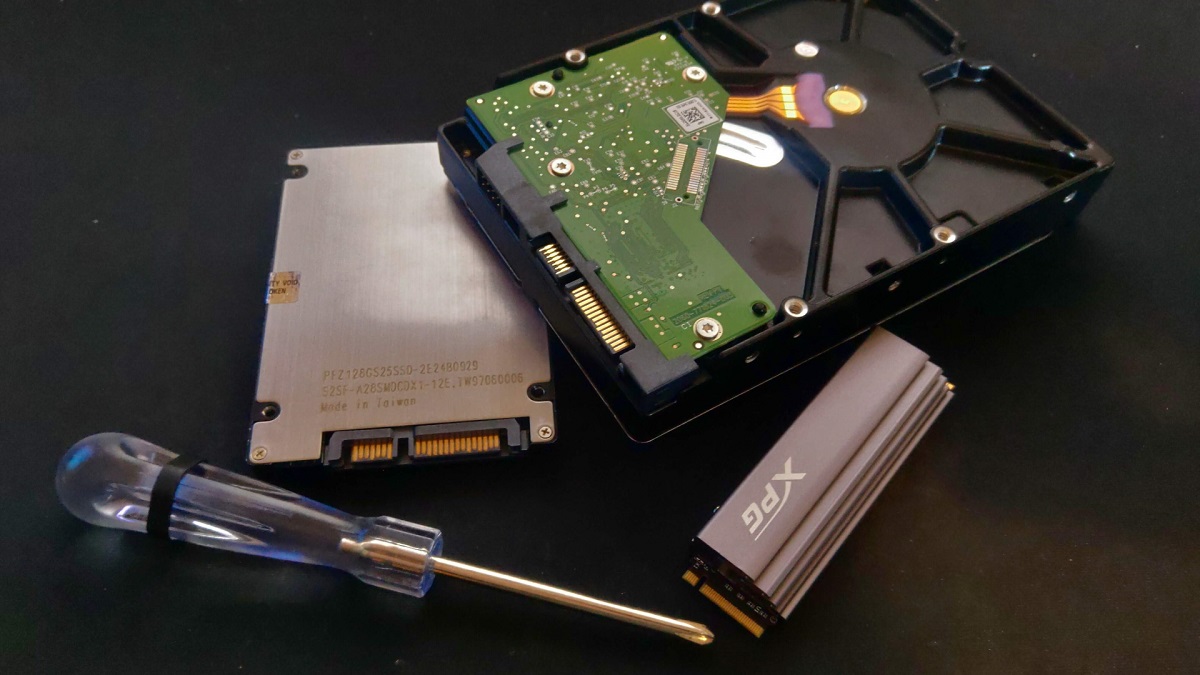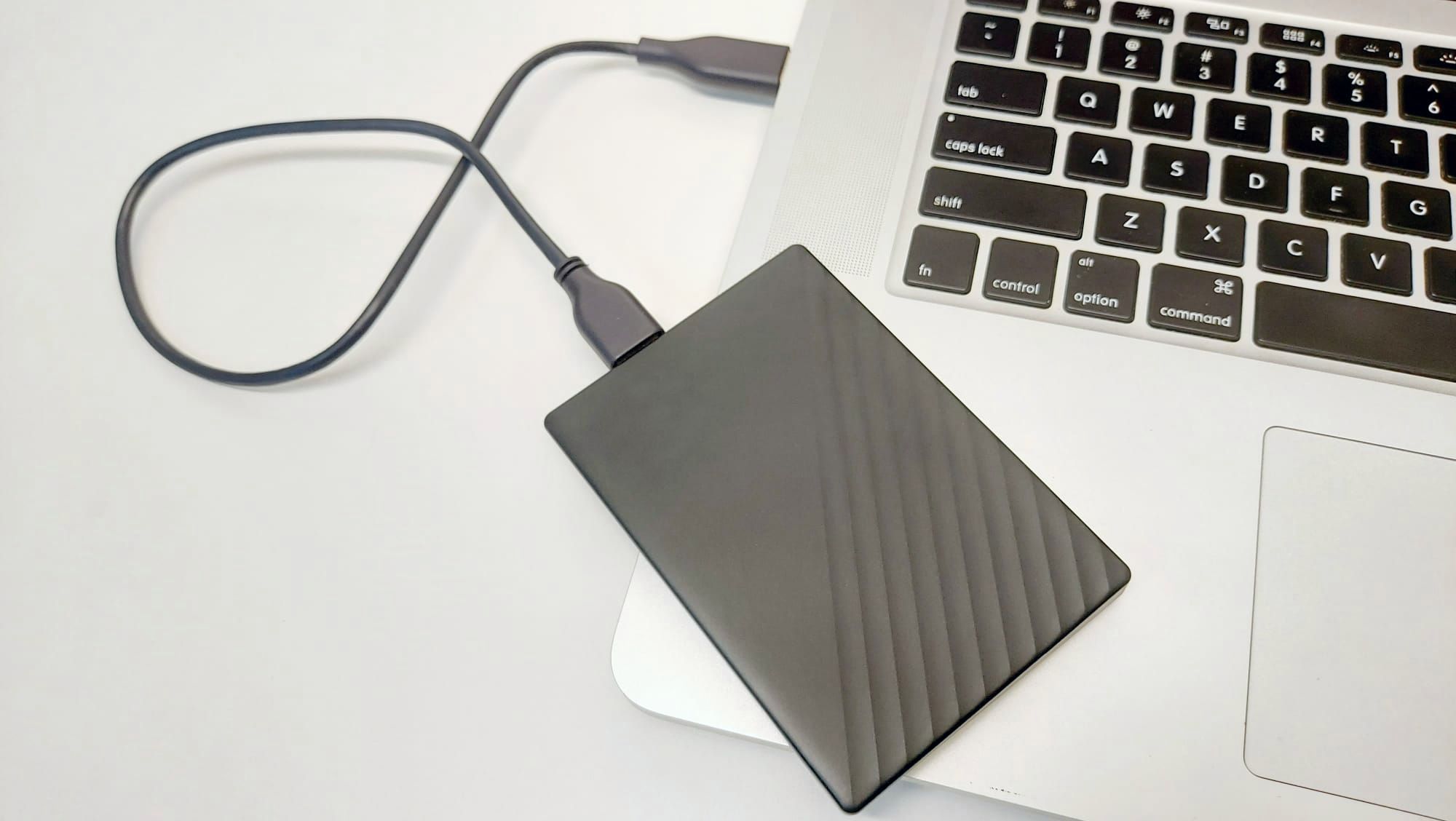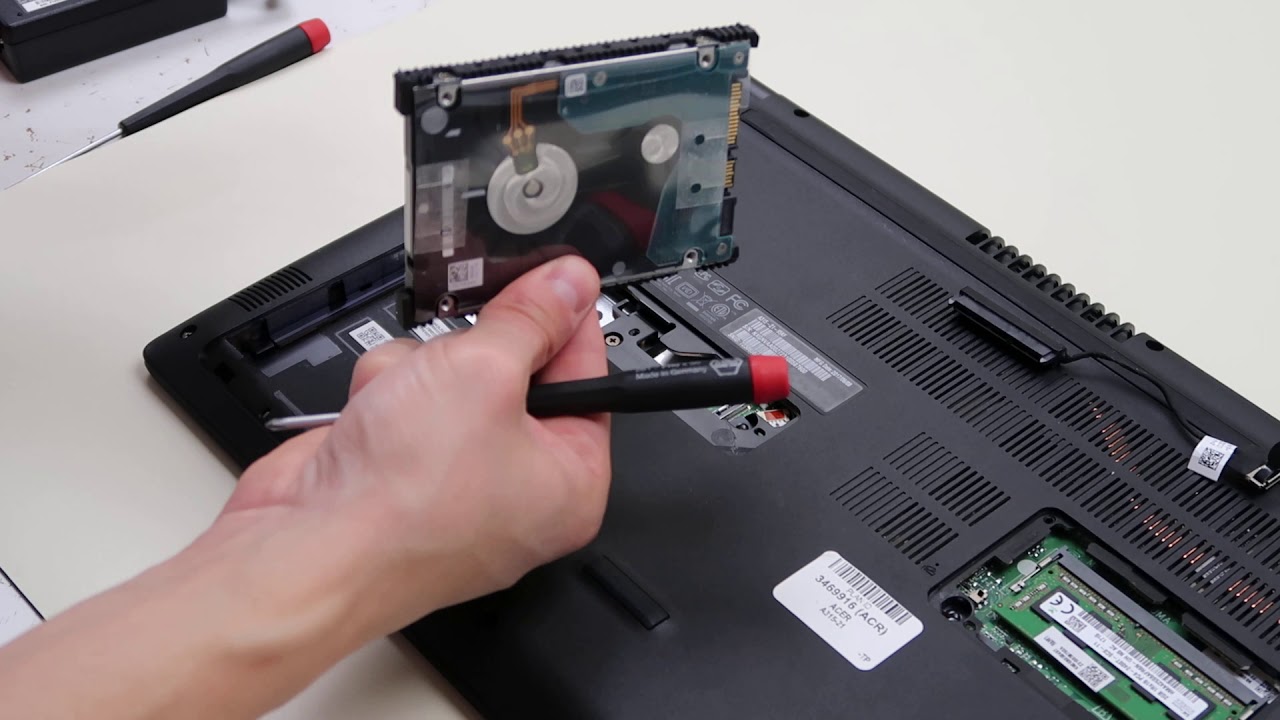Introduction
As the use of solid-state drives (SSDs) becomes increasingly prevalent in modern computing, it’s important for users to understand what is taking up space on their drives. Unlike traditional hard disk drives (HDDs), SSDs have limited storage capacities and can fill up quickly if not managed properly. With limited space, it’s crucial to identify and analyze what files and folders are occupying the most room on your SSD.
Knowing what’s taking up space on your SSD serves multiple purposes. Firstly, it allows you to optimize your storage usage and make the most of the available capacity. By identifying large files and folders, you can determine which ones are essential and which ones can be safely deleted or moved to free up space. Secondly, it helps you keep track of the health and performance of your SSD. If you notice that your drive is consistently filling up too quickly, it could indicate an issue that needs to be addressed.
Checking your storage usage on an SSD is relatively simple, and there are various tools and methods available to help you identify what’s consuming your precious disk space. In this article, we will explore both built-in tools and third-party software options to simplify the process of space analysis on your SSD. Additionally, we will discuss effective strategies for organizing and managing your storage to ensure optimal performance and longevity of your SSD.
Why it’s important to identify what’s taking up space on your SSD
Understanding what is consuming space on your SSD is crucial for several reasons. Let’s delve into the importance of identifying and managing space usage on your SSD:
- Maximize Storage Capacity: SSDs typically come with finite storage capacities. By identifying what is taking up space, you can optimize your storage utilization and ensure that you are not wasting valuable storage on unnecessary files or duplicate data.
- Improve System Performance: As SSDs fill up, their performance can be negatively impacted. When storage space is limited, the drive needs to work harder to find and access data, resulting in slower read and write speeds. By identifying and removing large or unnecessary files, you can free up space and improve overall system performance.
- Identify Disk-Intensive Applications: Some applications or processes may consume a considerable amount of disk space without your knowledge. By identifying these disk-intensive applications, you can decide whether they are essential or if there are alternatives that use fewer resources.
- Prevent Data Loss: If your SSD is close to reaching its storage capacity, there is an increased risk of data loss. Unexpectedly running out of space can lead to file corruption or other data-related issues. By regularly monitoring your storage usage, you can proactively manage your files and prevent potential data loss scenarios.
By understanding what’s taking up space on your SSD, you gain better control over your storage, improve system performance, and reduce the risk of data loss. In the following sections, we will explore various methods and tools to help you identify and manage storage usage on your SSD effectively.
Checking your storage usage
Checking your storage usage is the first step in identifying what’s taking up space on your SSD. Fortunately, operating systems provide built-in tools that allow you to easily monitor your storage usage.
On Windows: Windows 10 includes a useful utility called “Storage Sense” that helps you understand how your storage space is being utilized. To access it, go to Settings > System > Storage. Here, you will see a breakdown of the storage usage by different categories like Apps & Features, Documents, Pictures, and more. You can click on each category to view specific files and folders occupying space on your SSD.
On macOS: macOS offers a similar feature called “About This Mac.” Click on the Apple menu in the top-left corner of your screen and select “About This Mac.” Then, click on the “Storage” tab to see an overview of your storage usage. You can click on the “Manage” button to get more detailed information about large files, downloads, and system files.
These built-in tools provide a basic understanding of your storage usage, but for more in-depth analysis and control over your SSD, you may need to explore third-party software options.
Third-party software options: There are several third-party tools available that offer more comprehensive and customizable storage analysis. Some popular options include WinDirStat, TreeSize, and DaisyDisk for Windows, and Disk Inventory X, GrandPerspective, and OmniDiskSweeper for macOS. These tools provide detailed visual representations of your disk space, allowing you to pinpoint large files and folders that are occupying substantial amounts of space on your SSD.
By regularly checking your storage usage, either using built-in tools or third-party software, you can have a clearer understanding of the files and folders taking up the most space on your SSD. This knowledge will help you make informed decisions on how to effectively manage and optimize your storage usage.
Using built-in tools to identify large files and folders
Most operating systems provide built-in tools that allow you to identify large files and folders on your SSD. By utilizing these tools, you can easily pinpoint the space-consuming elements and take necessary actions to manage your storage effectively.
On Windows: Windows 10 File Explorer has a built-in feature that enables you to sort files and folders by size. Open File Explorer and navigate to the folder you want to analyze. Click on the “View” tab at the top of the window and select “Details.” Then, click on the “Size” column to sort the files and folders by size in descending order. This way, you can identify the largest files and folders, and decide whether to delete or move them to free up space.
On macOS: Finder on macOS also provides a convenient way to identify large files and folders. Open a Finder window and navigate to the location you want to analyze. In the menu at the top, click on “View” and select “Show View Options.” Check the box next to “Calculate all sizes” to display the size of both files and folders. You can then sort the items by size, either by clicking on the size column or by selecting “Sort By” and choosing “Size” from the drop-down menu.
Using these built-in tools, you can quickly identify large files and folders that are consuming significant amounts of space on your SSD. Once identified, you can assess whether these files are necessary or if they can be safely removed or relocated to free up valuable storage.
It’s important to note that while these built-in tools offer an initial glance at storage usage, they might not provide a comprehensive view or include system files and hidden folders. For a more detailed analysis, utilizing third-party software may be beneficial.
In the following section, we will explore third-party software options that offer advanced functionality and deeper insights into your SSD storage usage.
Third-party software options for space analysis
While built-in tools provide a basic overview of your storage usage, third-party software offers more advanced features and detailed insights into the space occupied by files and folders on your SSD. These tools can help you identify large files, analyze storage patterns, and manage your SSD effectively.
WinDirStat: WinDirStat is a popular software for Windows that provides a visual representation of your disk space. It displays a comprehensive tree view of your files and folders, showing their sizes in a color-coded format. This allows you to quickly identify the largest files and folders consuming space on your SSD. WinDirStat also offers features like file cleanup recommendations and integration with Windows Explorer for easy file management.
TreeSize: TreeSize is another powerful disk space management tool available for Windows. It offers a similar visual representation of your storage usage, allowing you to identify large files and folders at a glance. TreeSize also provides a detailed breakdown of space usage based on file type, which can be helpful for finding specific types of files that are taking up substantial space on your SSD.
DaisyDisk: For macOS users, DaisyDisk is a popular choice for space analysis. It provides a visually appealing and interactive disk usage map, allowing you to navigate through your storage and identify large files and folders with ease. DaisyDisk also offers a preview feature, enabling you to assess the content of files before deciding whether to delete them.
Other notable options for macOS include Disk Inventory X, which presents your disk space usage in a treemap view, and GrandPerspective, which offers a graphical representation of your storage usage, highlighting the largest files and folders.
These third-party software options provide detailed insights into your SSD storage usage, making it easier to identify and manage files and folders that are occupying significant space. By using these tools, you can optimize your disk usage and ensure that your SSD operates efficiently.
In the next section, we will discuss effective strategies for organizing and managing your SSD storage to further enhance efficiency.
Organizing and managing your SSD storage efficiently
Efficiently organizing and managing your SSD storage is crucial for optimizing performance and maintaining a clutter-free environment. By implementing the following strategies, you can make the most of your SSD’s storage capacity:
- Create Folder Structures: Organize your files and folders into logical and manageable structures. Create separate folders for different categories such as documents, pictures, videos, and downloads. This makes it easier to find and access specific files when needed.
- Use Descriptive File Names: Give your files descriptive names that accurately reflect their content. Avoid generic names or ambiguous abbreviations. Descriptive file names not only make it easier for you to locate files but also help in quickly identifying duplicates or unnecessary files.
- Utilize Cloud Storage: Consider offloading non-essential files and documents to cloud storage services like Google Drive, Dropbox, or OneDrive. Storing files in the cloud not only frees up space on your SSD but also provides the convenience of accessing your files from any device with an internet connection.
- Regularly Backup and Archive Files: Create a backup system to ensure the safety of your important files. Regularly back up your files to an external hard drive or cloud storage. For files that are rarely accessed but still need to be retained, consider archiving them in a compressed format to save space while preserving their content.
- Remove Unnecessary Software: Uninstall any software or applications that you no longer use. Unused programs take up valuable space on your SSD and can also impact system performance. Use the built-in software uninstallation feature or a third-party software uninstaller to ensure that all associated files and folders are removed.
By implementing these strategies, you can maintain a well-organized SSD storage system that maximizes available space and enhances overall performance. Regularly reviewing and managing your files and folders will help prevent unnecessary clutter, ensuring that your SSD operates efficiently and provides optimal storage capacity for your needs.
Removing unnecessary files and folders
One of the most effective ways to free up space on your SSD is by removing unnecessary files and folders. Over time, your SSD can accumulate redundant or obsolete data, which takes up valuable storage space. By regularly decluttering and removing these files, you can optimize your SSD’s storage capacity. Here are some methods to remove unnecessary files and folders:
- Delete Temporary Files: Temporary files are created by various applications and can quickly accumulate on your SSD. Use the built-in disk cleanup utility on your operating system to remove temporary files. Additionally, third-party cleaning tools like CCleaner can help scan your system for temporary files and delete them.
- Empty the Recycle Bin/Trash: When you delete files, they are moved to the Recycle Bin on Windows or the Trash on macOS. Emptying the Recycle Bin or Trash permanently deletes these files and frees up precious space on your SSD.
- Uninstall Unnecessary Software: Review the software installed on your SSD and uninstall any programs that you no longer use or need. Removing unused software not only frees up space but also improves system performance.
- Remove Duplicate Files: Duplicate files can accumulate over time and consume unnecessary space on your SSD. Use dedicated duplicate file finder software like Duplicate Cleaner (Windows) or Gemini 2 (macOS) to scan your SSD and remove duplicate files, freeing up valuable storage space.
- Archive or Compress Files: For files that you don’t need to access frequently but still want to keep, consider archiving them in a compressed format. This reduces their file size and helps free up space on your SSD. Zip files or other compressed file formats can be easily created using built-in tools or third-party software.
It’s important to exercise caution when removing files and folders to avoid accidentally deleting essential data. Always double-check the content of files and ensure that you have proper backups before permanently deleting them. Taking the time to regularly review and remove unnecessary files and folders will not only free up space but also help improve the overall performance and longevity of your SSD.
Tips for preventing unnecessary clutter on your SSD
Preventing unnecessary clutter on your SSD is essential for maintaining optimal storage capacity and performance. By following these tips, you can ensure that your SSD remains organized and free from unnecessary files and folders:
- Be selective with file downloads: Before downloading files, consider whether you truly need them. Avoid downloading large files or programs that you won’t use frequently. This helps prevent your SSD from quickly filling up with data that you don’t actually need.
- Regularly clean up your downloads folder: The downloads folder tends to accumulate a significant amount of files over time. Take a few minutes each week to review and clean out any unnecessary files that you have downloaded. Move important files to appropriate folders and delete the rest to prevent clutter.
- Manage multimedia files: Multimedia files such as photos and videos can take up substantial space on your SSD. Consider using cloud storage or external storage devices to store large collections of media. This way, you can free up valuable space on your SSD while still having access to your files when needed.
- Avoid excessive file duplication: Be mindful of creating multiple copies of files unnecessarily. If you frequently work on documents or projects, make sure to overwrite or update existing files instead of saving multiple versions. This helps prevent unnecessary duplication and saves on storage space.
- Regularly perform system maintenance: Schedule regular system maintenance tasks, such as disk cleanup and disk defragmentation (if applicable). These processes help eliminate temporary files, optimize storage allocation, and improve overall performance.
- Manage browser cache and temporary files: Web browsers often store cache and temporary files on your SSD. Periodically clearing these files can free up space and improve browsing performance. Check your browser settings to find options for clearing cache and temporary files.
- Use external storage solutions: If you have large files or folders that you don’t need frequent access to, consider using external storage solutions like external hard drives or USB drives. This allows you to keep your SSD clutter-free while still having access to your files when required.
By implementing these tips, you can prevent unnecessary clutter on your SSD and maintain efficient storage utilization. A clutter-free SSD not only improves performance but also provides a smoother and more productive computing experience.
Conclusion
Managing and optimizing the storage on your SSD is crucial for maintaining performance and making the most of the available capacity. By understanding what’s taking up space on your SSD and implementing effective strategies, you can keep your SSD organized, efficient, and free from unnecessary clutter.
In this article, we discussed the importance of identifying what’s consuming space on your SSD and how it impacts performance and storage capacity. We explored various methods, including using built-in tools and third-party software options, to check storage usage and identify large files and folders. Furthermore, we provided tips for organizing and managing your SSD storage effectively, including removing unnecessary files and folders, and preventing future clutter.
Remember to regularly check your storage usage, uninstall unused software, and delete temporary and duplicate files to free up space on your SSD. Utilizing cloud storage, external storage solutions, and practicing selective file downloads can also help prevent unnecessary clutter. By following these practices, you can optimize the performance and longevity of your SSD.
Taking a proactive approach to managing your SSD storage ensures that you have enough space for your important files, improves system responsiveness, and reduces the risk of data loss. So, take the time to assess your SSD’s storage usage, declutter regularly, and adopt strategies to prevent unnecessary clutter. Your SSD will thank you with improved performance and a longer lifespan.







